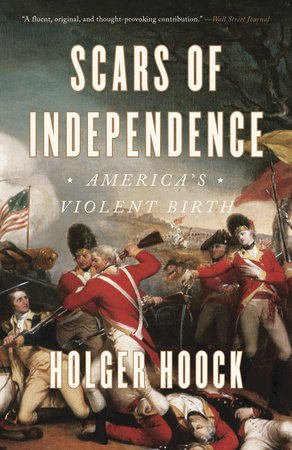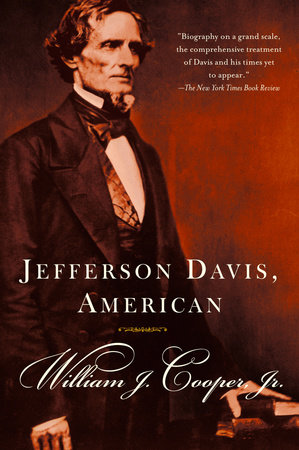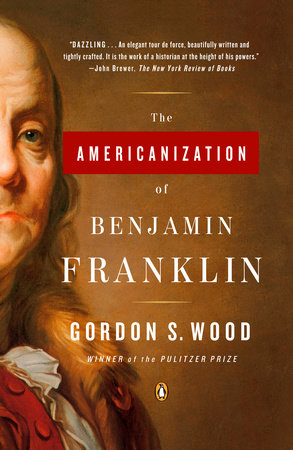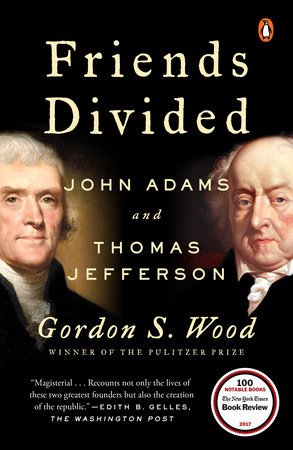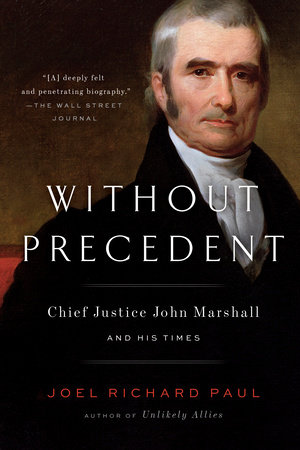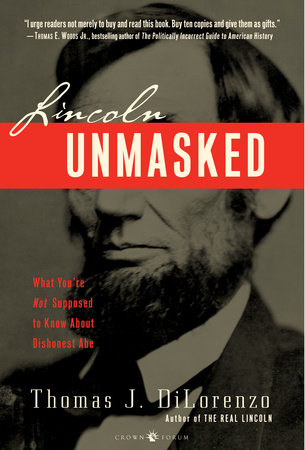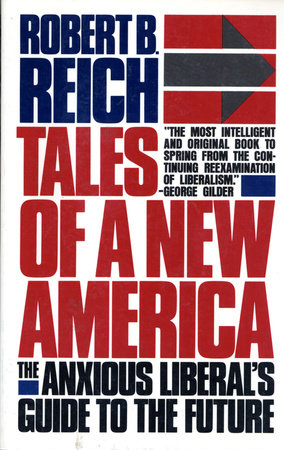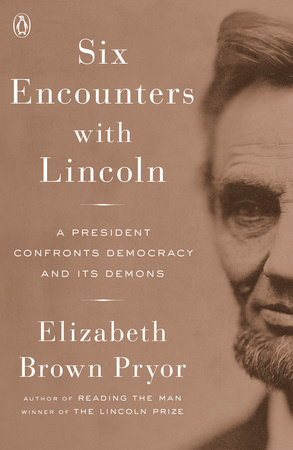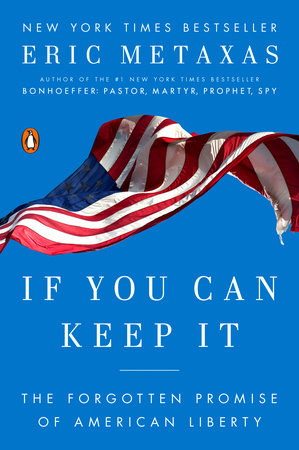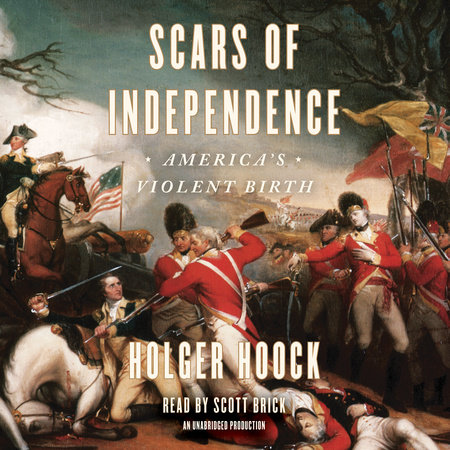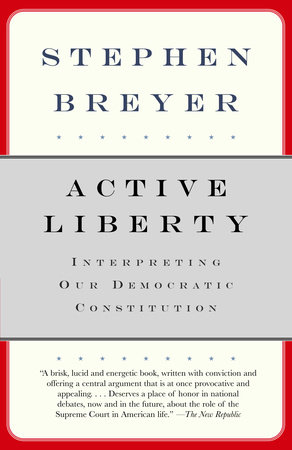Author Q&A
Q. Your book addresses some of the most disturbing episodes of the American Revolution, yet these details are largely unknown in the United States. How did you first encounter this side of the war? What compelled you to study the American origins story?
A. I first became curious about Revolutionary-era violence a decade ago. I was studying eighteenth-century art for a previous book when I came across some monuments in churches and cathedrals across England. They all told similar stories of Loyalists being hunted, dispossessed, and driven into exile for opposing the Revolution. And those harrowing accounts of persecution and suffering stayed with me—not least because they were hard to reconcile with the conventional narrative I had in my mind of a restrained and largely nonviolent revolution. So I researched the stories behind those monuments, and I read more widely in British and American sources. What jumped out at me was the sheer scale and pervasiveness of the violence generated by the Revolution’s partisan fury—America’s first civil war—and by a war that resulted in proportionately greater casualties than any other war in American history except the Civil War.
Born and raised in Germany, I had not grown up with the national myths of either Britain or America. But for the past two decades I have been researching and teaching the history of Britain and the British Empire on both sides of the Atlantic. With Scars of Independence, I wanted to bring a fresh perspective to the American founding moment: it’s always tempting for humans to remember the violence suffered by their own but to neglect that endured by others.
Q. You refer to the Revolution as “America’s first civil war.” Can you explain what you mean by this?
A. American popular memory of the Revolution tends to focus on great white men debating noble ideals. And there are good reasons why Americans narrate their Revolution and war for independence as an uplifting, heroic tale. But what I argue in the book is that to understand the Revolution and the war we must write the violence, in all its forms, back into the story. This really starts with recognizing the Revolution as America’s first civil war, between the Patriots and the Loyalists. To defend the Revolution against its internal enemies, the Patriots routinely resorted to violence and terror—to threats and bullying, physical violence, torture, and the occasional lynching. What I show in the book is that this violence was not the regrettable exception to an otherwise orderly and restrained Revolution: it was pervasive, necessary, and indeed a defining characteristic of the American Revolution.
Q. Can you describe the extent of the research you conducted in writing Scars of Independence? What was your most surprising discovery?
A. I researched and wrote the book over a period of some seven years, though, of course, I was also teaching, running projects, editing a journal, and starting a family. I looked at manuscripts in twenty or so archives across the US and in the UK: state papers and military records, the correspondence of leaders and the diaries of lesser known men and women. I read a wide range of printed sources, from pamphlets and newspapers to poems, looked at contemporary imagery, and also studied the vast scholarly literature on the American Revolutionary era that any author of a book like this relies on.
I wasn’t really surprised to find that the violence was an all-pervasive presence in those sources—after all, we know that more than ten times as many Americans died, per capita, in the Revolutionary War than in WWI, and that the death rate among Revolutionary-era prisoners of war was the highest in American history.
But the book is as much about the stories of violence as it is about the actual violence. And it is the power of those stories that impressed me throughout. To give just an example, the so-called Hessians,
those 36,000 German troops hired by the British Crown, are stereotypically seen as the cruelest of fighters: brought up in despotic lands, not invested in the British cause, always nasty and brutal. In fact, evidence of the Hessians committing worse atrocities than the British is quite limited, and American captives often feared Loyalist and British guards more than Germans.
One of my most surprising findings was just how sophisticated and relentless the Revolutionaries were in documenting British war crimes and disseminating the results of their forensic investigations. If we dismiss allegations of excessive violence as blatant exaggerations, we miss this innovative forensic approach to documenting war crimes, and the Patriots’ persistent moral campaign that focused national and international attention on British atrocities.
Q. Tell us more about the role of these forensics and their propagandistic uses?
A. It was by spreading stories of persecution, suffering, and sacrifice that American Patriots and Loyalists, and also Britons, tried to win the support of the American population and gain the sympathies of audiences abroad. In this war, it mattered not only how each side conducted themselves, but what stories each could convincingly tell about their own and their opponents’ conduct.
And I don’t just mean rumors and exaggerations about battlefield atrocities or biological warfare—though I do examine such claims. I mean, as well, sophisticated spin operations, such as those that occurred near the start of the war when Norfolk, Virginia, one of the largest cities in North America, was destroyed almost completely. The Patriots alleged the British navy had reduced the town to ashes. In fact, under the cover of what turned out to be a pretty ineffective bombardment from the sea, it was American soldiers on the ground who were responsible for some 95 percent of the destruction. The Revolutionaries thus managed to lay the blame entirely at the feet of the British, deny them a naval base and garrison town, and rally public opinion behind the American cause. George Washington hoped that such “Flaming Arguments” would “unite the whole Country” against Britain.
Though American investigations established the truth behind Norfolk, it was covered up well into the nineteenth century. This was an age with very little by the way of war reporting. Today we are, sadly, used to war crimes tribunals and truth and reconciliation commissions after civil wars. But the Revolutionaries experimented with some truly innovative practices: doctors and magistrates and officers collected evidence in the aftermath of military encounters to prove that the British had broken the codes of war, for example, by killing surrendering soldiers instead of granting them quarter. They carried out similar investigations with regard to prisoners of war and the victims of rape. The Congress then published their reports and disseminated them in the newspapers across the colonies or states and in Europe.
The Americans were much better than the British at telling a coherent story of enemy violence and turning military defeat into moral victory, all with a view to justifying their rebellion and forging their new nation. They had the crucial advantage that a story of victimhood works for colonials, but not, as a rule, for an empire. “Controlling the narrative” is not a modern political concern—it’s always been a part of politics, and of American politics.
Q. The terrible violence of the American Civil War is very much a part of our national consciousness. Why isn’t that the case with the American Revolution?
A. The selective remembering and strategic forgetting started soon after the Revolution itself. The Revolution’s Loyalist losers, and the violence they had suffered, were systematically excluded from public discourse. The Patriots controlled the story of the Revolution and war—in monuments, Revolutionary parades, and Fourth of July speeches—while the Loyalists did not nurture a melancholy folklore of loss, as American Southerners did after the Civil War. (The British tendency to turn a blind eye to an unprecedented defeat is also partly to blame.) Over time, even the Revolutionary-era emphasis on the blood that the Patriots shed in defense of their new republic yielded to a strangely bloodless narrative of the war that mirrors the image of a tame and largely nonviolent Revolution.
As Britain and the United States started forging a special relationship around the turn of the twentieth century, historians minimized the legacy of violence between kindred Anglo-Saxon peoples. During the Cold War, so-called American consensus historians interpreted the Revolution as a conservative response to British provocations, and the ordeals participants had suffered were largely written out of the story. Textbooks in American college classrooms and popular biographies of Founding Fathers perpetuated this romanticized, almost quaint version of the Revolution, in which ideas and ideals largely tune out physical and psychological trauma. So, with Scars of Independence, I wanted to strip some of that romanticism from the Revolutionary era and see it for what it also was: messy and divisive, with participants on all sides struggling with violence.
Q. Why was the use of military force against the rebellious Americans such a fraught topic in Britain, both among leaders and in society at large?
A. This was in large part related to the sensitive matters of identity that it touched upon. Britons stressed both the similarities and the differences between themselves and their North American fellow-subjects. On the one hand, the colonials were tied to them through a shared language and religion, and the Crown and a common heritage of political rights, as well as a flourishing trade. But the transportation of convicts from the British Isles, large-scale immigration from other countries, and the presence of a quarter of a million African slaves had diluted the colonists’ Britishness: they seemed less polished, less well educated, and less widely traveled. On the eve of the war, British non-Anglican Protestants, as well as shopkeepers and artisans in towns and cities, tended to sympathize with the American rebels and, like the Protestant Irish, opposed going to war. By contrast, most of the Anglican clergy, as well as attorneys and other professionals and gentlemen living in cities, favored the use of force, as did a majority of Scots and inhabitants of northern English counties. However, whether they emphasized similarity or difference, and whether they supported or opposed the use of force to suppress the rebellion, both groups recognized the American Revolution as a civil war within the British Empire—colonials until 1776; Loyalists and the British until 1783.
Among political and military leaders, hard-liners advocated the use of extreme punitive force to crush the colonial insurgency, in line with the ways that Britain had responded to earlier rebellions. At the opposite end stood those leaders who proposed conciliation, not war, or who suggested that minimal force be deployed to pressure the colonists to negotiate a settlement. The American crisis divided even the British Army. Most of the officers ordered to serve in America did eventually obey, including those who at first had opposed coercion, but several chose to end their careers rather than take up arms against fellow subjects.
Q. How did the Revolutionary War shape contemporary ideas about the acceptable limits of violence in warfare?
A. By the late eighteenth century, European lawyers and officers shared certain codes that distinguished between legitimate and illegitimate methods of waging war and proscribed excessive violence against enemy combatants, captives, and civilians. In theory, rebels were not entitled to the protection of such European-style codes of war. A captured rebel was not a prisoner of war but a traitor “destined for the cord.” In practice, the sheer numbers of American captives, and the real risk of retaliation against British prisoners, meant that captured rebels were in most respects treated as quasi-prisoners of war. Many leaders were aware that Britain’s reputation as a humane and civilized empire would come under scrutiny. Some advocated strategic humanitarianism to maximize the chances of postwar reconciliation.
The American Patriots in turn sought to fight the war in ways that matched their political ideals: by highlighting the enemy’s brutishness while striving to abide by the prevailing codes of war, the Revolutionaries tried to win the moral war that accompanied the conflict on the ground. In General George Washington, the Americans had a commander in chief who strove to uphold the codes of war, and wished to be seen to be doing so. Whenever the British committed battlefield atrocities or abused prisoners of war, America’s leaders appealed to the nation and the world to witness how the new America was out-civilizing the British Empire.
After the war, the memory of American captives martyred on pestilent prison ships, and of others feared dead in Asia and Africa, prompted the United States to think creatively about international law. When the US signed a treaty of amity and commerce with Prussia in 1785, the document included an unprecedented clause setting guidelines for the treatment of prisoners of war in a future conflict: minimum standards for food, accommodation, and fresh-air exercise; a ban on stuffing prisoners into dungeons or onto prison ships and transporting them to Asia or Africa. At the moment of her violent birth, the United States led with the power of moral example—at least on the international stage.
Q. You write that for black Americans, and especially for slaves, the Revolution brought more violence and great danger but also, in some cases, opportunity. Can you explain?
A. For Africans in America, the Revolution represented a paradox. Both sides relied to various extents on black Americans to support their war effort, and both sides continued to condone slavery. At the start of the war, Lord Dunmore, the last royal governor of Virginia, and later General Sir Henry Clinton, the British commander in chief, promised freedom to slaves belonging to American rebels. Both these emancipation decrees were strategic measures, designed to decimate the labor force (especially in the rebel South), strengthen the British Army’s support infrastructure, and stoke white fear of slave unrest—although in the end they proved counterproductive and only bolstered white rebels’ will to resist.
Blacks, however, were not just pawns in a white colonial-imperial struggle. For many of the half million blacks living in America during the war, Clinton’s proclamation in particular presented an opportunity. In thousands of acts of resistance, African Americans took on the struggle to assert their own interests and identity in the turmoil that was the Revolutionary War. But whether they decided to run from their masters or stay on the plantations, blacks continued to face the violence of racial discrimination and of war and the disproportionate impact of contagious diseases such as smallpox.
Q. How does understanding the violent nature of the Revolution change the way we think of the Founders? How effectively did they heal the nation after civil war?
A. The 1782 peace treaty between the United States and Britain required the American states to grant a general amnesty to all former Loyalists, with some toothless clauses under which the Congress would merely recommend to the states that they restore confiscated estates and properties belonging to “real British subjects.” (Other wartime exiles would be allowed to return for twelve months to try and recover property.) Perhaps not surprisingly, returning Loyalists initially experienced renewed violence against them, especially if they had taken up arms for the British or had helped them in other ways: regions saw more tarring and featherings, some Loyalists were killed when they tried to return to their former communities, and many more were apprehended and sent away for good.
But while some states took their time to repeal discriminatory legislation, there were also American leaders who warned that preserving the Revolution’s ideals and maintaining America’s international reputation as an honorable, treaty-abiding nation required reconciliation. After winning the moral war, they believed, America also had to win the peace. These leaders included George Washington and his former aide-de-camp, Alexander Hamilton, who added economic arguments in favor of reconciliation, warning that if Loyalists left in large numbers, they would take capital, professional skills, and their consumer power with them. And Hamilton practiced as an attorney what he preached: he defended dozens of Loyalists in the New York courts of law under the Confiscation, Citation, and Trespass Acts that, as he argued, discriminated unlawfully against them.
Still, remnants of official anti-Loyalist policies survived in many states at least until the turn of the new century. And until the early nineteenth century, anti-Loyalist sentiment also remained a useful tactical weapon in elections. Yet despite such undercurrents of animosity, the founding generation did gradually integrate their new nation. Even Benjamin Franklin, who never forgave his own son William for becoming a Loyalist leader during the Revolution, eventually worked toward reintegrating his home state of Pennsylvania.
All in all, reconciliation occurred more quickly than in many other countries after a decade of bitter civil war. And, of course, the postwar US avoided military dictatorship, and—at least for a time—a major new civil war. But this outcome also entailed unresolved contradictions for America’s emerging empire of liberty, most painfully and violently the entrenchment and extension of slavery and the exclusion and soon the decimation of Native Americans.
Q. How should this portrait of America’s founding conflict inform the way Americans think about their country today?
A. An unvarnished picture of the Revolution of course reveals its defining ferocity, but it also helps us appreciate its lasting accomplishments and discern its complicated legacies. Looking afresh at the scars of independence through the eyes of participants on all sides permits us to untangle the inherent tensions between America’s moral objectives and violent tendencies.
I read the violent story of the American nation’s not-so-immaculate conception as a cautionary tale for the modern American empire—with its persistent impulse to intervene in other countries’ revolutions and civil conflicts and its quest for nation building in little-understood regions. Seeing the contradictions of America’s founding more clearly, and being alert to the potential pitfalls of pursuing moral objectives by violent means, advises, I think, an approach to global leadership less missionary and aggressive than we saw at the start of this century. At this particular political moment, however, America’s new leaders do well to remember that their Founders embraced an internationalist, not an isolationist, outlook—eager to engage with other nations, and encouraging free trade and immigration. At the same time, they upheld the principle of projecting the power of America’s example, as much as the example of her power.
In terms of domestic politics, racial inequality was baked into the very founding: the Revolution was followed by the entrenchment and extension of slavery and the exclusion and soon the decimation of Native Americans. As I completed the book in the spring of 2016, I voiced my hope that Americans were beginning to face many painful truths about their society, perhaps more directly than they had for some time—racial discrimination from voting rights to policing and criminal justice; socioeconomic inequality; a broken immigration system. I speculated that they might be ready also to reappraise their nation’s beginnings—to let go of their last great romance with war and reflect on the contradictory legacies of the nation’s violent birth.
But in 2016’s tumultuous election season, we saw the depths of nativism, anti-immigrant sentiment, and racism in parts of American society (echoing sentiments also evident in the UK’s Brexit referendum). Scenes of violence against dissenters at rallies recalled the nastier sides of early America’s political culture. The specter of renewed state-sponsored torture of prisoners threatened to undermine the country’s best founding traditions. As demagoguery, authoritarianism, and discriminatory tendencies threaten the American democratic experiment that the Founders started a quarter millennium ago, it is now up to citizens to maintain the kind of respectful, open, just, and free society they wish to inhabit.
